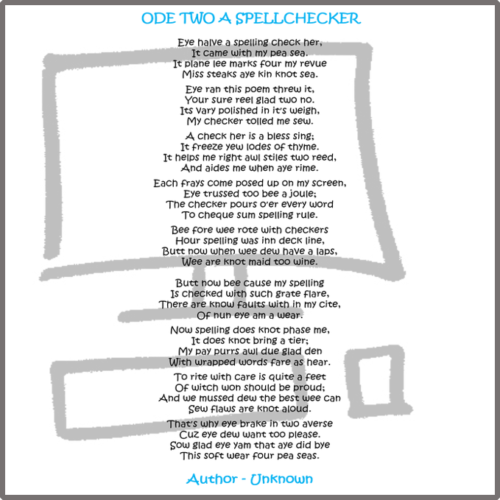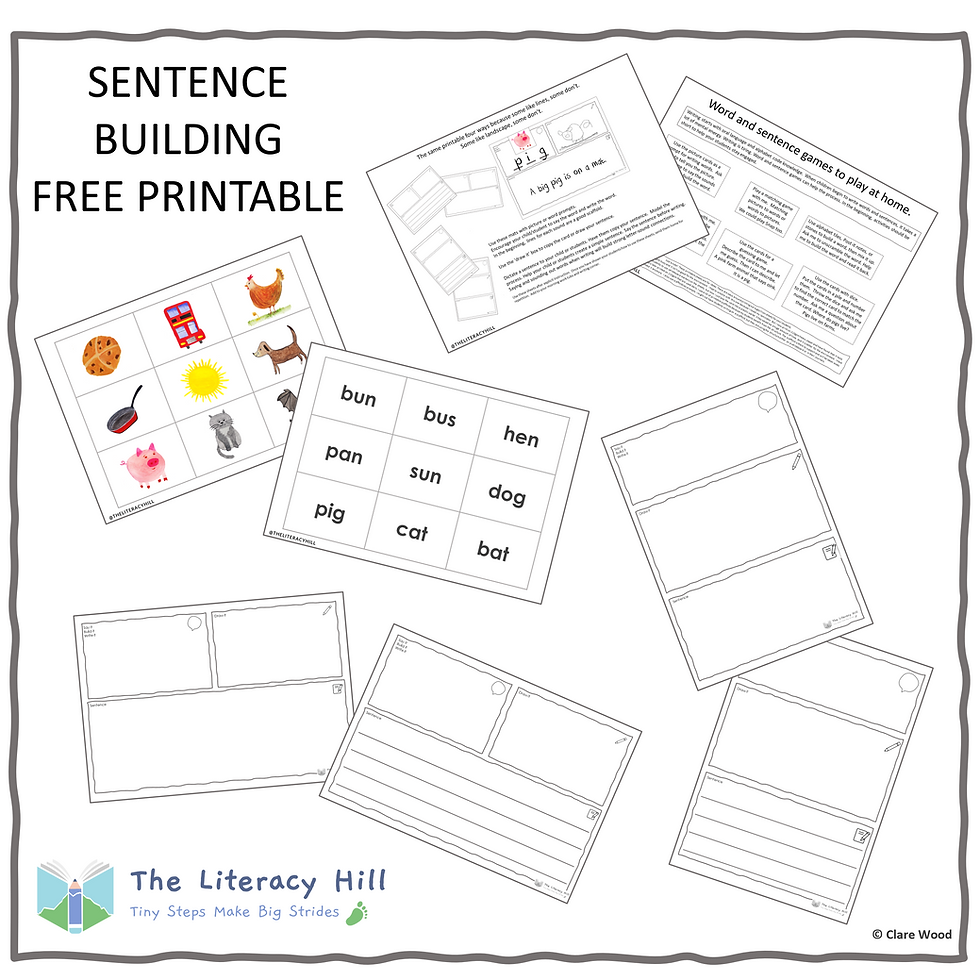SPELLING TESTS DON’ T WORK
- Developers Devzmelbourne

- Sep 5, 2022
- 4 min read

Spelling, the very word evokes terrible memories of spelling tests for most adults. We have to ask how a weekly test will help to develop good spelling habits? Does the test come after explicit instruction? Does the test inform future teaching? If not, what’s the point?
Spelling instruction that is woven throughout the literacy curriculum will engage students as they learn to spell the same words they are reading whilst using the same words to write. I am not talking topic words—I am talking a carefully created list of words that focus on a set sound or pattern.
A reading, spelling, writing web, so to speak!
The poem above perfectly highlights how, without a complete vision of spelling, it can all go horribly wrong. Spelling is often a subject on its own, a weekly list of words that normally gets the Look Cover Write Check treatment and a test happens — that is it!
I am not anti spelling list, a well-formed list truly serves a purpose
I use word lists weekly and they help us explore words and group words by sound or spellings. Often we look at meanings, similar words and play with the words on the list to aid comprehension.
Check out posts all about word-building here and here
Check out a post about The Reading and Spelling Toolkit here
I give my students a weekly list of words that go with the sound and alternative spellings we are exploring. Over a couple of sessions, we make words, manipulate sounds to create new words and explore meaning. We also write lots of silly sentences and a short dictation concludes the week.
After we have explored three or so sounds, we review past learning and take time to go over each sound and viable graphemes. We can’t go forward if we don’t look back.
When I was in the classroom, a year of spelling tests gave me the same answers each week, and the tests didn’t really inform me of how I could assist my students. So, I adopted this model to engage my students and inform future sessions.
Effective spelling instruction will always emphasise:
1. The Sounds Of The System
There are 44 sounds – give or take depending on accent and over 200 spellings. Knowledge of sounds, syllables, patterns and meaningful parts of speech are crucial for developing the ability to spell well.
2. A Multisensory Approach
Using two or more senses when learning a new skill is vital for effective learning. To do this, children need to experience playing with sounds and words in ways that are meaningful to them at their stage of learning.
In the beginning, preschoolers need to be playing in the sand writing letters, making them in play dough, moving around letter cards, stickers or magnetic letters and other fun activities that puts learning in context. As children get older, the learning still needs to be multisensory.
Children need time to hear the sounds roll out of their mouths, feel the sounds in their mouth and hands, and see the sounds on the paper as letter symbols
BUT — Children don’t have to be playing with Playdough or painting for there to be a multisensory experience.
In primary school, the best multisensory experience a child can have is from intentional instruction about sounds
How do they feel in your mouth and how do the sounds match the letters?
Worksheets are a waste of valuable teaching time for much of the literacy curriculum.
Activities that build words with grapheme tiles with a followup activity of writing the same words is a much better activity than any worksheet. Always get your students to say the sound as they move or write each grapheme to link the sound to the spelling.
3. Patterns
There are many patterns in the English language that can be systematically learned. An effective spelling list should just focus on one sound and the most common alternative spelling patterns. Activities in the classroom should focus on linking the words in reading, writing and spelling instruction. The spelling list should not be a standalone activity. This is not effective instruction. Activities that bind reading the words, spelling the words and writing the words will actively engage children in purposeful learning.
Most children need a systematic cumulative approach for them to fly with all aspects of literacy. Yes, there are those kids that just get it, but they are few and far between.
4. Writing
Sounds and words need to be played with and activities need to build skill. In the beginning, children just need to get some marks on the paper. Flow, creativity, and motivation can be all stifled if the mechanics of language are always the focus. 100% correct spelling when writing is the end goal, however, correcting everything all the time will only confuse and demotivate children. The focus should be on correcting one or two spelling patterns in discussion with the student. Explaining how language works will develop decoding and comprehension strategies over time.
5. Meaning
What do the words actually mean? Use words in context to understand what they mean. The poem above highlights this beautifully. To comprehend words, children need lots of discussions. Talk about words and their meanings, add them to sentences and define them. Take the words flour and flower, without a context you might never know they mean different things.
Articles I have found useful











Comments